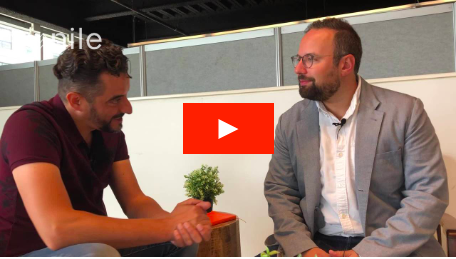Flywheel and Service Hub - Interview with Michael Redbord from HubSpot
Since its creation, HubSpot has evolved a lot, from being a marketing platform, to being a marketing, sales, and service platform. As its growth is an inspiration for us at Nile, I took the opportunity to have a conversation with Michael Redbord, General Manager for the Service Hub at HubSpot.


Here is what he told us about working at HubSpot, building the flywheel, and creating the Service Hub:
1- The flywheel comes from natural evolution
When HubSpot was created in 2006, it was not even obvious to many small to medium-sized businesses that Inbound Marketing and even content marketing in general was the way to grow.
Today, almost every company sees the interest of marketing to grow.
But, over the last few years, HubSpot started to realize that customers are getting more and more important as a part of the growth and that their voices got louder, enough to build or break your reputation. In fact, this voice has become even louder than the power of marketing.
This is when HubSpot started to think about the flywheel, as a concept to place the customer at the center of a company's growth.
"What HubSpot always tries to do, is to find the rising tide, the beginning of a new trend out of the market of how to grow."
This does not mean that you should stop doing marketing, you still absolutely need it. But you should start adding service as a sit to the table. That's what the flywheel is about: having marketing feed sales, sales feed service and service feeding back into marketing.
2- There is a massive disconnect between the service you think you deliver and your customers' perspective
When starting to think about the Service Hub, HubSpot led a study which unveiled a massive disconnect: 80% of companies think that they deliver superior customer experience, but only 8% (yes, 8 !) of their customers feel the same way.
Mike said:
"I just think that a lot of companies are not asking themselves the right questions, are not pushing themselves hard enough. And really, they are not listening to their customers carefully enough."
This is why, when creating the flywheel, HubSpot kept that disconnect in mind. They felt it was about time that companies listen to their customers carefully as a way to grow and spin that cycle of marketing to sales to service.
3- Service is not a cost-center, it is a way to grow
Many companies view customer service as an obligation after a sale. When a customer raises their hand to say that they have a technical issue, the company will help them solve this problem and that's it. This is the full extend of customer service in many companies.
This way of thinking does not allow you to see your customers as a business opportunity.
"If you have a better experience than your competitors, you are going to keep more customers. Those customers are going to spread good word-of-mouth about you. Then, you can do marketing that uses those customers as a center piece, by creating case studies or referrals. This is a bit of a methodology."
In a very competitive market, service is becoming a key element of differentiation!
4- The philosophy behind the Service Hub
The Service Hub was created to help companies to move from the base level of service to something more. By achieving this something more, you earn this opportunity to grow with your customers.
Also, many small to medium-sized companies have a central system which gathers what happens within the marketing and the sales systems. Usually, the customer people are isolated from sales and marketing. Their data is not shared. They are using a help desk that does not integrate back into anything.
"This creates a very challenging experience when you are trying to get marketing to feed sales, and sales to feed service: it breaks your flywheel when you don't have tools that all tie back to the same central system of record."
The goal behind the creation of the Service Hub was just that: to enable the companies with the flywheel methodology.
5- It is terrifying to ask for feedback, but you need to do it
To be able to implement a true customer success management strategy, you need to start where it might hurt, by asking your customers for feedback. This will allow you to have a deeper understanding of the details of your customers's experience, as very small details can create very large impressions, and create great or poor experiences.
"You can begin to use customers feedback as the magnifying glass that will reveal the secrets as to why your customers are happy or unhappy."
By unveiling those secrets, you might have a better understanding of what you need to put in place to improve your customers' experience. Maybe you need a knowledge base, maybe you need a better F.A.Q. on your website... Listen to your customers, they will tell you what they need.
To find out more about HubSpot, do not hesitate to watch our demo below (in French).
S’inscrire à la Newsletter
Tous les membres de l'équipe Nile sont des experts marketing et sales pour l'industrie, tous certifiés Hubspot et tous orientés process, data et performance.Notre culture code précise les valeurs dans lesquelles chacun(e) d'entre nous se reconnait. Nous recrutons et manageons sur la base de ce culture code.








